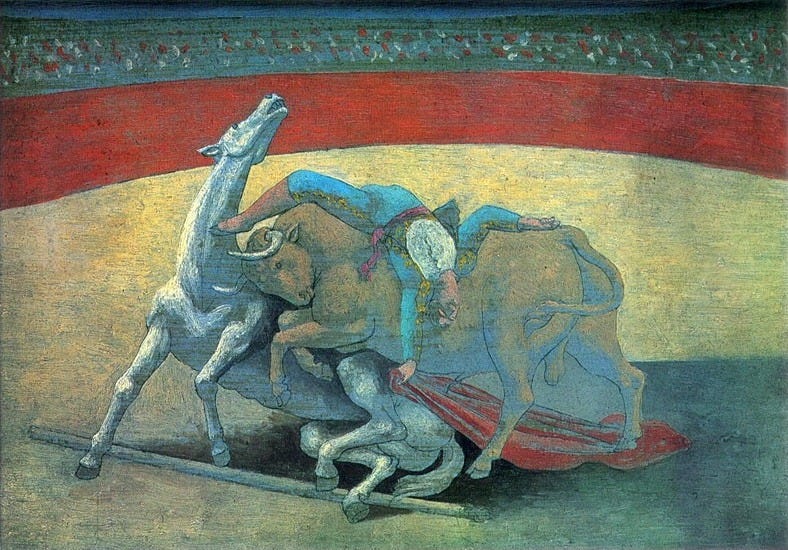
I'm not a stylist. I don't paint toward a certain "look" in my paintings. Instead, I respond to my subject in a way I feel best represents my sense of it. I might scrape on paint broadly with a dough scraper, or I might dab with a tiny brush. I might limit my palette to just a couple of muted colors, or I might span the rainbow—the more garish, the better.
Or maybe I might settle for a tiny ink drawing in my pocket sketchbook.
With all these different approaches, my paintings often look like they were done by different people. In fact, when visitors come to my studio gallery and look around a bit, they sometimes ask, "How many artists do you represent?" Just me, I say, but I have a dozen personalities.
The disadvantage, of course, is that it makes it hard for galleries to pin you down. They like an artist to have a mature, consistent style. Me, I'm all over the place.
But I don't worry about it. Whatever medium, tools and process I choose for a piece, if they work for me, they work for the painting. Maybe someone will like the painting well enough to buy it. For much of my painting life and even today this is a hope of mine, as the mere act of painting doesn't put food on the table—work needs to be sold. Yet I've never been one motivated by money (trust me, I'm not in the privileged class, and this lack of motivation has certainly been a problem) but rather by a need to Make Something.
I think most artists are like me and lack a consistent style. But they're smart about it. The work you see has been self-curated to present a consistent style. I remember asking one of my mentors, who does not paint toward a show but instead picks from what he's already done, how he selects work for an exhibition. It's an awesome task since he has unframed pastels and oils lining every rack and shelf, crammed into every corner—a body of work that spans 70 years of making art. He says he simply leans paintings along the wall and picks whatever looks good together. "Looking good together" implies a unified vision based on subject, color and mark-making—in short, a consistent style.
What gets shown to the world isn't the full breadth of an artist's vision, but a tightly focused and, above all, unified grouping.
Interestingly, the passage of time has a way of curating an artist's body of work, of culling out whatever doesn't seem like the artist's recognized style. Collectors, galleries and museums all look for pieces that are representative of an artist's work, as that is where the perceived value lies, whether monetary or aesthetic. Over the years, the pieces that don't fit the curve fall away and are forgotten, until an art historian compiles, for better or worse, a catalogue raisonné of everything from the artist's first, tentative scrawls as a child to the last, arthritic brush stroke plus all those personalities in between.
My advice: Don't worry about developing a style, and get on with it.



